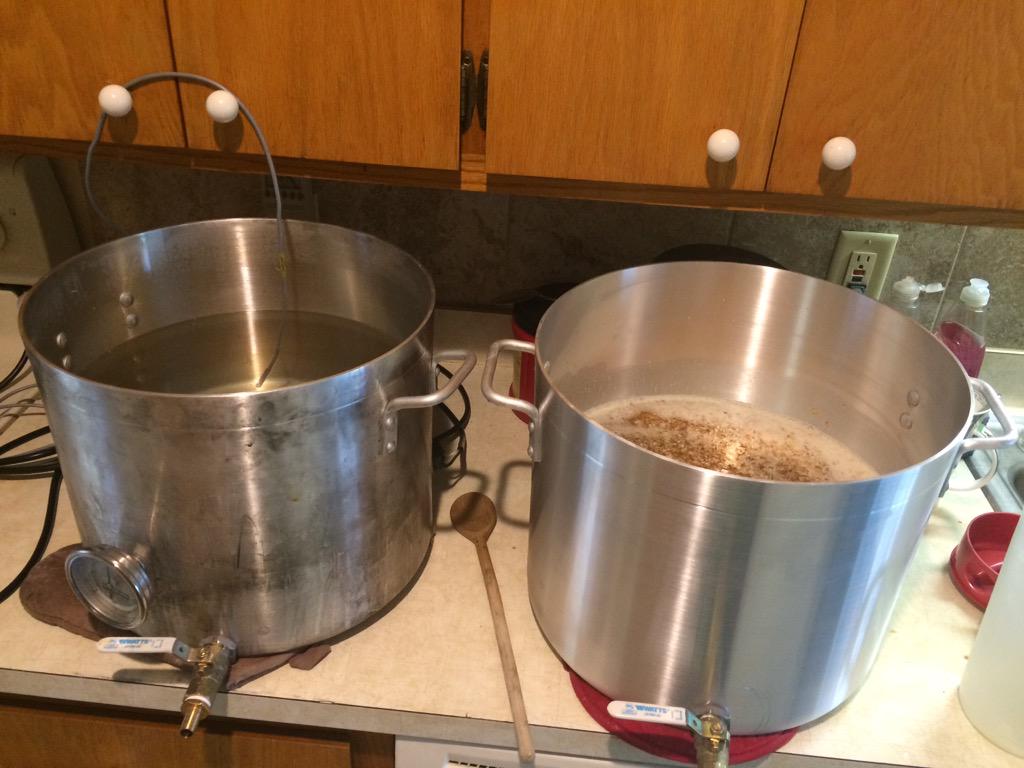I want to run this by you guys to see if anyone can come up with a better method. I love the ease, and simple setting the temperature control you have with electric brewing, but I am fairly limited on funding for new equipment so I have to plan out months in advance.
Currently I have:
1 32qt kettle with thermometer, ball valve, and 1500 watt electric water heater filament mounted. I've been doing BIAB with it, but want to move onto brewing with a little less water, as the kettle is full for only a 2.5 gallon batch of Bock.
My plan:
Get a 2nd 8-10 gallon kettle with ball valve, filter tube and thermometer, total cost will be about $100 for that. Use the 2nd kettle as the mash tun, gravity feed the wort to my existing kettle where it is heated, and use a steelhead pump to recirculate the wort back to the brew kettle. When done, I'll raise the temp on the electric kettle to mashout temp, and sparge back into it for the boil. Boiling is achieved with the help of the electric stovetop and the filament.
Does this sound viable? Any suggestions would be appreciated, and thank you!
Currently I have:
1 32qt kettle with thermometer, ball valve, and 1500 watt electric water heater filament mounted. I've been doing BIAB with it, but want to move onto brewing with a little less water, as the kettle is full for only a 2.5 gallon batch of Bock.
My plan:
Get a 2nd 8-10 gallon kettle with ball valve, filter tube and thermometer, total cost will be about $100 for that. Use the 2nd kettle as the mash tun, gravity feed the wort to my existing kettle where it is heated, and use a steelhead pump to recirculate the wort back to the brew kettle. When done, I'll raise the temp on the electric kettle to mashout temp, and sparge back into it for the boil. Boiling is achieved with the help of the electric stovetop and the filament.
Does this sound viable? Any suggestions would be appreciated, and thank you!





